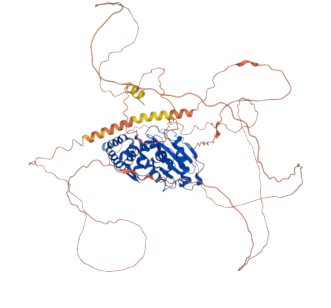Unveiling the Formation of the Universe's First Stars Through Radio Signals

In a groundbreaking study, an international team of astronomers led by the University of Cambridge has unveiled new insights into the formation of the universe's first stars, utilizing the 21-centimeter signal—a faint radio signal emitted by hydrogen atoms shortly after the Big Bang. This research, published in the prestigious journal *Nature Astronomy* on June 21, 2025, provides a pivotal understanding of cosmic evolution by examining the properties of these stellar giants that emerged just 100 million years after the universe's inception.
The study's lead author, Professor Anastasia Fialkov from the Institute of Astronomy at the University of Cambridge, emphasized the significance of the 21-centimeter signal in understanding the early universe. "This is a unique opportunity to learn how the universe's first light emerged from the darkness," Fialkov stated, highlighting the role of early stars and black holes in influencing this faint energy signature that dates back over 13 billion years.
The 21-centimeter signal serves as a crucial tool for astronomers, as it offers a rare glimpse into the conditions of the universe's infancy. Hydrogen atoms filling the gaps between star-forming regions emit this signal, which carries information about the mass distribution of Population III stars—believed to be the first generation of stars formed in the universe. The research indicates that previous studies may have underestimated the connection between the 21-centimeter signal and the masses of these early stars, primarily due to a lack of consideration for X-ray binaries that existed among these cosmic giants.
To further investigate the properties of these first stars, the researchers modeled the 21-centimeter signal's behavior in relation to the masses of Population III stars. This innovative approach allows for a more accurate prediction of the signal's characteristics, which could enhance our understanding of the early cosmic environment. "We are the first group to consistently model the dependence of the 21-centimeter signal on the masses of these stars," Professor Fialkov explained.
The findings have implications that extend beyond mere academic interest. The research highlights the potential of ongoing projects such as the Radio Experiment for the Analysis of Cosmic Hydrogen (REACH) and the Square Kilometer Array (SKA). REACH is currently in its calibration stage and promises to deliver valuable data about the early universe, while SKA, an ambitious array of antennas under construction, aims to map fluctuations in cosmic signals across vast expanses of space.
Despite the limitations of radio astronomy, which relies on the statistical analysis of faint signals rather than capturing vivid images like optical telescopes, these projects will offer insights into entire populations of stars, X-ray binary systems, and galaxies. "It takes a bit of imagination to connect radio data to the story of the first stars, but the implications are profound," Fialkov noted, pointing to the vast potential for new discoveries that can reshape our understanding of cosmic history.
In summary, this research not only sheds light on the formation of the universe's first stars but also underscores the importance of innovative astronomical techniques and collaborative research efforts in uncovering the mysteries of the cosmos. As projects like REACH and SKA progress, the scientific community anticipates a deeper understanding of the early universe and the celestial bodies that shaped its evolution.
Advertisement
Tags
Advertisement





